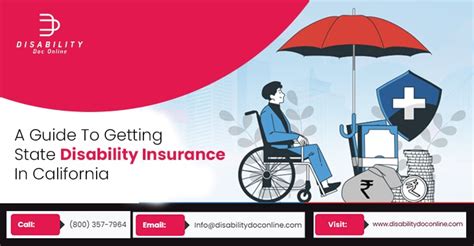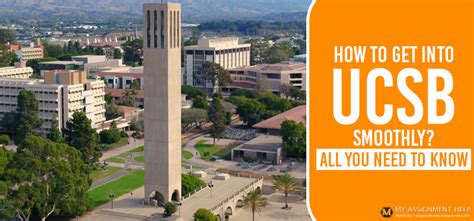California, known for its progressive stance on social welfare, offers a comprehensive array of disability benefits designed to support individuals who are unable to work due to a medical condition or disability. This guide is crafted to navigate the complex world of California disability benefits, providing insights into the various programs available, eligibility criteria, application processes, and the rights and responsibilities of beneficiaries.
Introduction to California Disability Benefits
California’s disability benefits landscape is multifaceted, with programs administered by both the state and federal governments. The primary objectives of these benefits are to provide financial assistance, medical care, and sometimes vocational rehabilitation to individuals with disabilities, helping them achieve a level of independence and participation in society.
Types of Disability Benefits in California
State Disability Insurance (SDI): This program, administered by the Employment Development Department (EDD), provides short-term disability benefits to eligible workers who are unable to work due to a non-work-related illness, injury, or pregnancy. SDI offers partial wage replacement for a limited period, typically up to 52 weeks.
Supplemental Security Income (SSI): Although SSI is a federal program, California supplements the federal benefit for its residents. SSI is designed for individuals who are 65 or older, blind, or disabled, and have limited income and resources.
Social Security Disability Insurance (SSDI): Also a federal program, SSDI provides benefits to individuals who are unable to work because of a medical condition. To qualify, one must have worked and paid Social Security taxes, with the amount of work required depending on the age at which the disability occurs.
California Department of Rehabilitation (DOR): The DOR provides services and support to individuals with disabilities, aiming to assist them in obtaining and maintaining employment, and achieving independence. Services may include vocational rehabilitation, assistive technology, and more.
Eligibility Criteria
Eligibility for California disability benefits varies by program but generally includes:
- SDI: Being unable to work due to a non-work-related condition, being under the care of a licensed physician or practitioner, and having earned a minimum amount of wages subject to SDI tax.
- SSI: Meeting the federal definition of disability, blindness, or being 65 or older, and having limited income and resources.
- SSDI: Having a medical condition that significantly limits your ability to do basic work activities, having a condition that is on the SSA’s list of disabling conditions, or having a condition that prevents you from doing any “substantial gainful activity.”
Application Process
For SDI: Apply through the EDD website, over the phone, or by mail. You will need to provide medical documentation and information about your employment history.
For SSI and SSDI: Initial applications can be started online, by phone, or in person at a local Social Security office. Detailed medical records and sometimes additional documentation like proof of income or resources may be required.
For DOR Services: Reach out to a local DOR office to inquire about services and to begin the application process, which typically involves an assessment of your needs and goals.
Rights and Responsibilities
- Right to Appeal: If your application for disability benefits is denied, you have the right to appeal the decision. Each program has its own appeal process.
- Right to Confidentiality: Your personal and medical information is protected under various laws, including HIPAA.
- Responsibility to Report Changes: Beneficiaries must report any changes in their condition, work status, or financial situation, as these can affect eligibility and benefit amounts.
- Responsibility to Participate in Rehabilitation: For some programs, participation in rehabilitation or employment services may be required as a condition of receiving benefits.
Navigating the System
Navigating California’s disability benefits system can be complex and overwhelming. Here are some tips:
- Seek Professional Guidance: Consider consulting with a disability attorney or advocate, especially if you’re applying for SSDI or appealing a denial.
- Stay Organized: Keep detailed records of your medical treatment, work history, and any correspondence with benefits agencies.
- Be Patient: The application and determination process can take several months, so plan accordingly and follow up regularly.
Future of Disability Benefits in California
As healthcare and social services continue to evolve, so too will the landscape of disability benefits in California. Efforts to improve accessibility, streamline application processes, and enhance support services are ongoing. It’s essential for both current and prospective beneficiaries to stay informed about these developments and how they might affect the availability and accessibility of benefits.
Conclusion
California’s disability benefits are designed to provide a safety net for individuals facing challenges due to a disability or medical condition. By understanding the various programs available, the requirements for eligibility, and the processes involved in applying for and maintaining benefits, individuals can better navigate this complex system and access the support they need. Whether you’re seeking short-term financial assistance or long-term support and rehabilitation, knowing your options and rights is the first step towards a more secure and independent future.
FAQ Section

What is the difference between SDI and SSDI in California?
+SDI (State Disability Insurance) and SSDI (Social Security Disability Insurance) are both disability programs, but they are administered differently and have different eligibility criteria. SDI is a California state program that provides short-term benefits for non-work-related illnesses or injuries, while SSDI is a federal program providing long-term benefits for individuals with significant disabilities. SDI is funded through payroll taxes and managed by the California Employment Development Department, whereas SSDI is part of the Social Security program and funded through Social Security taxes.
How do I apply for disability benefits in California?
+The application process for disability benefits in California depends on the specific program. For SDI, you can apply online, by phone, or by mail through the Employment Development Department. For SSI and SSDI, you can start the application online, by phone, or in person at a local Social Security office. Be prepared to provide detailed medical records and information about your work history and income.
Can I work while receiving disability benefits in California?
+It depends on the program. Some programs allow for limited work or trial work periods without affecting your benefits. For example, SSDI has a trial work period where you can work for up to 9 months within a 60-month period without losing your benefits. However, reporting any work activity is crucial, as it can affect your eligibility and benefit amount. For SDI, the focus is on providing benefits during a period when you are unable to work due to your condition.



